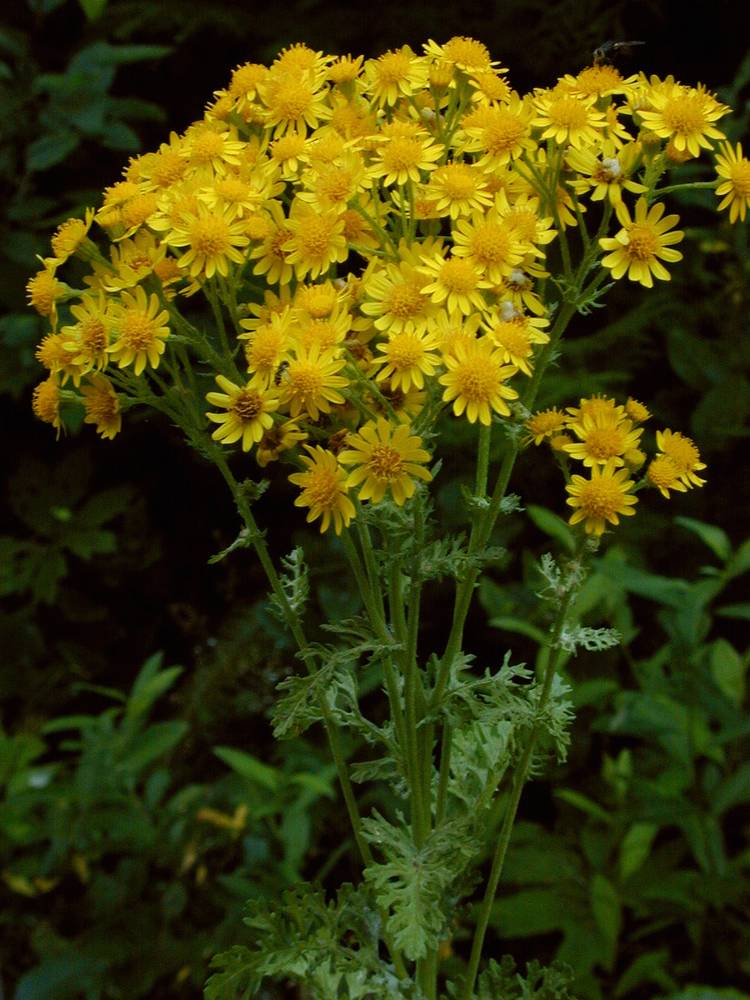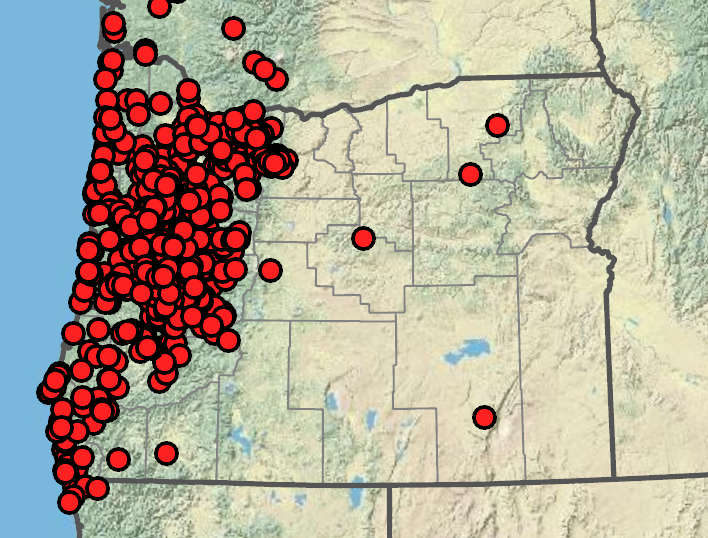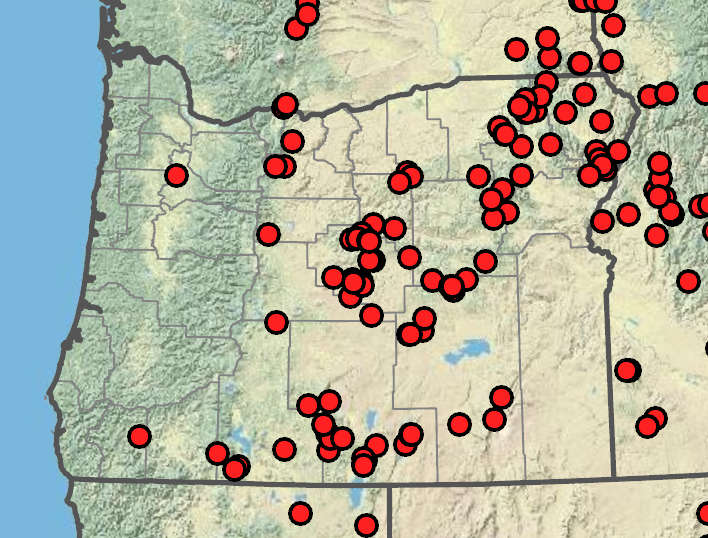Senecio jacobaea
Senecio hydrophiloides
stinking willie, tansy ragwort
stout meadow groundsel, sweet marsh butterweed
1, or rarely 2–4 and loosely clustered, often purple-tinged, sparsely and unevenly tomentose.
1, sometimes 2–4 and clustered, sometimes reddish tinged, glabrous or glabrate; young plants sometimes sparsely hairy.
basal usually withering before flowering;
cauline ± evenly distributed along stems;
distal slightly smaller; ovate to broadly ovate, bases tapered, usually 1–3-pinnate, ultimate margins dentate;
lobes obovate to spatulate, petiolate.
mostly basal;
cauline reduced distally, elliptic to broad lanceolate; firm, bases tapering;
margins dentate to denticulate;
surfaces glabrous;
petioles often distinctly winged;
distal sessile and bract-like.
compound corymb-like arrays;
bracts conspicuous but small.
loose or congested corymb-like arrays;
bracts 0 or inconspicuous.
widely cylindric or urn-shaped.
widely cylindric to campanulate.
~13;
rays 8–12 mm.
0 or 3–8;
rays 5–10 mm.
60–70+.
30–45.
13, 3–4(5);
tips black or dark green.
8, 13 or 21, 4–9 mm;
tips black.
2–6 bractlets, inconspicuous, usually < 2 mm.
2–5 bractlets, inconspicuous; < 2 mm.
0.75–1.3 mm, sparsely hairy or glabrous.
2–3 mm, glabrous.
(10)20–60+.
(6)15–30+.
=40.
=40.
Senecio jacobaea
Senecio hydrophiloides
Disturbed areas, pastures, roadsides. Flowering May–Sep. 0–1600 m. Casc, CR, Est, Sisk, WV. CA, ID, WA; north to British Columbia, northeast to MT, northeastern North America; Europe. Exotic.
Senecio jacobea is an introduced weed, originally from Europe. It establishes in places with cool, wet summers and is particularly toxic to livestock. In most states where it occurs, this species has been declared a noxious weed.
Damp hillsides, meadows, seeps. Flowering Jun–Jul. 1000–1900 m. BR, BW, ECas, Lava, Sisk, WV. CA, ID, NV, WA; north to British Columbia, northeast to Alberta, east to WY, southeast to UT. Native.
Plants in the western part of this species’ range tend to have single stems, more congested inflorescences, and more ray florets and have been treated by some authors as a distinct species (S. foetidus). Those further east have more stems, a looser inflorescence, and fewer ray florets. T.M. Barkley (1978) noted that these two forms intergrade so completely that they should be treated as a single species.
Debra Trock
Debra Trock
- Local floras:
BC,
CA,
OR,
WA
- Local Web sites:
CalFlora,
CalPhotos,
Flora NW,
PNW Herbaria,
Turner Photog.
WildflowerSearch
iNaturalist (observations)
USDA Plants Database
- LBJ Wildflower Center
- SEINet
- Plants of the World Online
- Encyclopedia of Life
- Wikipedia
- Google Image Search
- Local floras:
BC,
CA,
OR,
WA
- Local Web sites:
CalFlora,
CalPhotos,
Flora NW,
PNW Herbaria,
Turner Photog.
WildflowerSearch
iNaturalist (observations)
USDA Plants Database
- LBJ Wildflower Center
- SEINet
- Plants of the World Online
- Encyclopedia of Life
- Wikipedia
- Google Image Search





